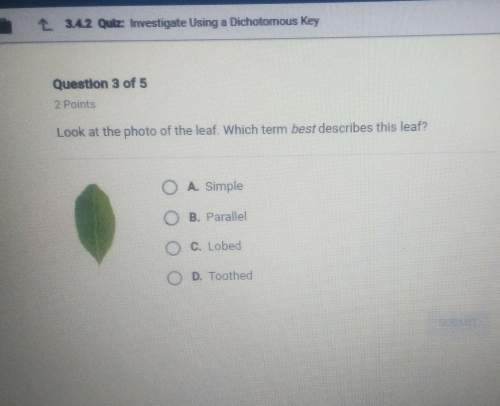
Biology, 04.02.2021 19:50, sandyrose3012
Jan Baptista van Helmont was a Flemish chemist and physician during the 1600’s. He studied various things, but is known for his experiments related to spontaneous generation theory. Spontaneous generation theory stated that living things came to life from non-living matter. For example, fleas could come to life from dust. Van Helmont created an experiment to test his hypothesis that sweat provided the “active principal” which brought mice to life from dust. To test this, he put a sweaty shirt and grains of wheat into a box and waited to see if mice were spontaneously produced. Every time he conducted his experiment, mice appeared to be chewing their way out of the box within 21 days. Based on the description of his experiment, did van Helmont set up his experiment correctly to follow the scientific method? Support your claim with evidence and explain your reasoning.

Answers: 3
Other questions on the subject: Biology

Biology, 22.06.2019 00:00, BreBreDoeCCx
Twind is considered to be an abiotic factor because it.?
Answers: 1


Biology, 22.06.2019 04:50, pineapplepizaaaaa
Describe the function of the endomembrane system? what organelles are involved?
Answers: 1

Biology, 22.06.2019 06:00, devoncruz23
During the process of two rails or sides break apart and attract new nucleotide bases to form a new and complete strand.
Answers: 2
Do you know the correct answer?
Jan Baptista van Helmont was a Flemish chemist and physician during the 1600’s. He studied various t...
Questions in other subjects:


Mathematics, 30.04.2021 16:10

Physics, 30.04.2021 16:10

Chemistry, 30.04.2021 16:10

Mathematics, 30.04.2021 16:10


Mathematics, 30.04.2021 16:10









